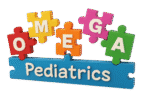 Adolescence is a time of tremendous change—physically, emotionally, socially, and cognitively. It’s also a time when many children first begin to show signs of behavioral health problems (such as anxiety, depression, oppositional behavior, attention challenges, substance use, or conduct problems).
Adolescence is a time of tremendous change—physically, emotionally, socially, and cognitively. It’s also a time when many children first begin to show signs of behavioral health problems (such as anxiety, depression, oppositional behavior, attention challenges, substance use, or conduct problems).
Understanding why these problems tend to surface during adolescence helps parents, caregivers, and health professionals respond with compassion, early detection, and effective support. This article will examine the factors contributing to the development of behavioral or mental health issues during adolescence.
We’ll break these causes into broad categories (biological, psychological, social/environmental) and show how they interact in adolescence. We’ll also highlight what signs to watch for, and how caring adults can help.
What Do We Mean by Behavioral Health Problems in Adolescence?
Before diving into causes, let’s be clear about what we mean by “behavioral health problems” in adolescence. These include a range of emotional, cognitive, and behavioral difficulties that can affect daily functioning, relationships, school performance, safety, and well-being. Examples are:
- Anxiety disorders (generalized anxiety, social anxiety)
- Depressive disorders
- Attention-deficit/hyperactivity disorder (ADHD)
- Oppositional defiant disorder (ODD) and conduct disorder
- Substance use or abuse
- Emotional dysregulation (difficulty managing strong feelings)
- Self-harm, suicidal ideation
- Eating disorders or disordered eating
Because adolescence is a vulnerable developmental window, many of these conditions first become noticeable during this period.
Why Many Disorders First Appear in Adolescence
It is not a coincidence that many mental and behavioral disorders have their onset in adolescence. Several developmental forces converge during adolescence; hence, this increases vulnerability.
1. Brain and Neurodevelopmental Changes
- During adolescence, the brain continues to mature, particularly in regions responsible for impulse control, decision-making, emotional regulation, and reward processing.
- The prefrontal cortex (the “control center”) is still under construction, while subcortical regions (emotion, risk/reward) are more active. This imbalance may make teens more prone to impulsive decisions, emotional swings, and sensitivity to peer influence.
- Neurochemical shifts and changes in neurotransmitter systems (serotonin, dopamine, etc.) can alter mood regulation and reward responsiveness.
- Hormonal changes associated with puberty interact with brain systems, further influencing mood, energy, and stress reactivity.
During adolescence, these brain changes create a milieu in which minor stresses or vulnerabilities can more easily tip into behavioral or emotional dysfunction.
2. Genetic and Biological Vulnerabilities
Some adolescents already carry underlying vulnerabilities (genetic, structural, or systemic) that were latent until the stressors of teen life bring them to the surface. Thus, adolescence often unmasks latent risk.
- A family history of mental illness increases risk. For instance, if a first-degree relative has depression, bipolar disorder, ADHD, or anxiety, the teen’s risk is higher.
- Prenatal exposures (e.g., maternal stress, substance use, infection) or birth complications can increase susceptibility.
- Brain injuries, neurological disorders, or chronic medical illnesses may lead to secondary behavioral health risks.
3. Emotional and Psychological Stressors
Adolescence involves deep internal and external stressors: identity exploration, increased self-awareness, bodily changes, and shifting relationships. When psychological stress accumulates, it may tip into a diagnosable condition.
- Identity and self-concept struggles: Teens wrestle with “Who am I?” questions, and may feel pressure to conform to certain images, norms, or roles.
- Emotional volatility: Strong emotions (anger, shame, sadness, and excitement) may be harder to regulate when one is still learning coping strategies.
- Emotional dysregulation (difficulty managing intense feelings) is a known risk factor for depression, self-harm, impulsive behavior, and substance use.
- Perfectionism and cognitive distortions: Teenagers may internalize harsh self-judgments, catastrophizing, or negative thinking patterns.
4. Social and Environmental Pressures
 The social world gets complicated in adolescence. Peers matter more; expectations rise; the safety net may thin. These social pressures during adolescence often act as “triggers” for someone with underlying vulnerabilities.
The social world gets complicated in adolescence. Peers matter more; expectations rise; the safety net may thin. These social pressures during adolescence often act as “triggers” for someone with underlying vulnerabilities.
- Peer relationships, peer rejection, and bullying: Exclusion or victimization by peers is strongly linked to emotional distress, depression, and behavioral problems.
- Academic and performance pressure: Heightened expectations for grades, standardized tests, college entry, and future success can generate persistent stress and anxiety.
- Family dynamics: Conflict, harsh or inconsistent parenting, parental mental health issues, divorce, neglect, or lack of emotional warmth are major contributors.
- Socioeconomic stress, adversity, and instability: Poverty, housing instability, community violence, food insecurity, discrimination, and cultural pressure all add burden. For example, housing instability has been shown to predict greater risk of depression and anxiety among youth.
- Trauma and adverse childhood experiences (ACEs): Past or ongoing abuse (emotional, physical, sexual), neglect, loss of a loved one, or exposure to violence increase the risk of behavioral dysfunction.
- Digital life and screen time: Excessive screen use, social media pressures, cyberbullying, and disrupted sleep or routines are associated with a higher risk of depression, anxiety, and behavior problems in youth.
- Cultural or societal expectations: Pressures related to gender roles, appearance, social success, or conformity can exacerbate internal conflicts.
5. Sleep, Nutrition, and Lifestyle Factors
Healthy habits are foundational for mental well-being. In adolescence, many of these break down. These lifestyle disruptions reduce the “buffer zone” that protects mental health, making adolescents more fragile.
- Poor sleep and sleep deprivation are strongly associated with increased mood problems, impulsivity, and emotional lability.
- Unhealthy diet or malnutrition may worsen mood, energy, or cognitive function. Some studies link high consumption of processed foods with anxiety and depression. This is more common during adolescence.
- Sedentary behavior and lack of physical activity: Physical activity helps regulate mood, reduce stress, and promote resilience in adolescence.
- Substance use or experimentation (alcohol, drugs, nicotine) can be both a symptom and a cause of mental health problems. Substance use alters brain chemistry and can intensify or precipitate anxiety, depression, or conduct issues.
How These Causes Interact
It’s important to understand that no single cause usually leads to behavioral health problems. Rather, multiple risk factors interact over time. A simplified way to visualize it:
- Vulnerability (biological + genetic)
- Trigger or stressor (social, academic, relational, trauma)
- Insufficient coping or support (weak resilience, poor habits, lack of social/emotional skills)
- Behavioral or emotional crisis emerges
For example, a teen with a genetic predisposition to depression experiences bullying at school, has poor sleep, lives in a high-stress family environment, and lacks healthy coping skills. These combine and may push them into depression or self-harm behaviors.
Meanwhile, protective factors (strong relationships, positive coping skills, stable family, access to caring adults, physical activity, supportive school) can buffer vulnerability.
Specific Behavioral Health Conditions and Their Typical Triggers
Here are a few conditions and how the above causes often relate to them:
| Condition | Common contributing causes or patterns | Notes |
| Depression / Major Depressive Disorder | Genetic risk, hormonal shifts, negative self-image, peer rejection/loss, academic failure, family conflict, poor sleep | Teens who are bullied or have chronic stress are especially vulnerable. |
| Anxiety disorders | High sensitivity to stress, perfectionism, overcontrol, family modeling, social evaluation pressure, and physiological hyperarousal | The fear of negative evaluation is often heightened in adolescence. |
| ADHD / Hyperactivity / Impulsivity | Often arises from earlier childhood neurodevelopmental risk; adolescent stress may worsen symptoms | Co-occurrence with mood or behavioral disorders is common. |
| Oppositional Defiant Disorder (ODD) / Conduct Disorder | Family conflict, inconsistent discipline, exposure to violence, peer “deviant” groups, modeling of antisocial behavior | Negative parenting styles and instability are strong risk factors. |
| Substance Use / Abuse | Peer pressure, emotional distress, sensation seeking, and self-medication for mood or trauma | Substance misuse may be a coping strategy but also intensifies problems. |
| Self-harm / Suicidal Behavior | Emotional dysregulation, trauma, depression, hopelessness, and lack of social support | Very serious — early detection and intervention are critical. |
Because many of these conditions overlap or co-occur, it is not unusual for a teen to show symptoms of more than one disorder at once.
Signs to Watch For (Early Warning Signals)
Early detection is key. Parents, teachers, and caregivers should be alert for changes in behavior, mood, or function. Some red flags include:
- Sudden or sustained mood changes (sadness, irritability, anger)
- Loss of interest in hobbies, withdrawal from friends
- Changes in sleep (insomnia or oversleeping)
- Changes in appetite, weight
- Decline in academic performance or motivation
- Frequent physical complaints (headaches, stomachaches) with no clear cause
- Drop in personal hygiene or self-care
- Increased risk-taking or impulsive behavior
- Defiance, aggression, lying, rule-breaking
- Substance use or experimenting with drugs or alcohol
- Self-harm behaviors, expressions of hopelessness, or suicidal ideation
Omega Pediatrics offers some insight into early behavioral health signs in children and teens in this article, 9 Early Signs to Watch for that Indicate Behavioral Health Issues in Your Child.
Also, see Omega’s post on managing anxiety in children for ideas on early intervention, Managing Anxiety in Children: An Essential Guide to Understanding and Coping with Anxiety in the US. If you notice multiple red flags over weeks or months, it’s wise to consult a pediatrician or mental health professional.
Why Some Teens Develop Problems While Others Don’t
Even when teens experience the same challenges—bullying, family stress, peer pressure, or academic demands—some bounce back quickly while others struggle deeply. This difference can be confusing for parents, but it’s not random.
Each teen’s mental and emotional well-being is shaped by a unique mix of biology, personality, environment, and support systems. Think of it like a scale: protective factors on one side help keep things balanced, while stressors and vulnerabilities weigh down the other.
When the protective side is stronger, teens stay resilient even in tough situations. When the stressors pile up without enough support, behavioral health problems can begin to show. Let’s explore the main reasons behind these differences.
- Strength of protective factors (good relationships, resilience, coping skills)
- Timing and accumulation of stressors (a “final straw” event can precipitate a crisis)
- Earlier life experiences (trauma, adverse experiences)
- Access to support and intervention (early help can prevent worsening)
- Individual temperament and coping style
How All These Factors Work Together
It’s rarely one factor that determines whether a teen develops behavioral health problems. Usually, it’s the combination of vulnerabilities and supports over time. Here’s how it often plays out:
- A teen has a biological or emotional sensitivity.
- Stressors—like bullying, family tension, or academic pressure—start to pile up.
- If protective factors (like support, routine, or coping skills) are weak, the teen feels overwhelmed.
- Without early help, emotional distress deepens into anxiety, depression, or behavior problems.
But this process can be reversed. Strengthening protective factors, reducing ongoing stress, and providing consistent support can restore balance—and even prevent disorders from worsening.
What Caregivers and Professionals Can Do
Understanding the causes helps guide action. Here are practical strategies:
Build Strong Relationships and Emotional Safety
- Foster open communication, listening without judgment
- Encourage empathy, validation, and emotional expression
- Provide consistent support, boundaries, and predictability
- Be a safe “go-to” person when your teen struggles
Strengthen Resilience and Coping Skills
- Teach emotional regulation: naming feelings, calming strategies (breathing, grounding, journaling)
- Encourage healthy problem-solving and planning skills
- Teach stress-management: exercise, hobbies, creative outlets
- Model coping behavior yourself
Promote Healthy Habits
- Prioritize sleep hygiene (regular bedtime, limiting screens before bed)
- Encourage a balanced, nutrient-dense diet
- Support regular physical activity
- Monitor and set reasonable limits on screen time (especially social media)
Monitor Social and Environmental Risks
- Be aware of peer dynamics: bullying, exclusion, negative friendships
- Stay connected to your adolescent’s school and support systems
- Reduce family stressors when possible (financial, residential instability, conflict)
- Screen for exposure to trauma or adverse events
Intervene Early and Seek Support
- Don’t wait until problems are severe. Early intervention is more effective.
- Work with pediatricians, school counselors, psychologists, or psychiatrists
- Support therapy, medication (if needed), or psychosocial interventions
- In crises (self-harm, suicidal thoughts), seek emergency help
Omega Pediatrics emphasizes early intervention in pediatric settings to reduce long-term harm in this article: Pediatricians: The Heroes Behind Healthy, Happy Kids.
Also, the low rate of youth receiving behavioral health care is a barrier; families should advocate for services. Read this article: 8 Reasons for Low Child Mental Health Service Rates
Be a Champion for Your Teen’s Emotional Health
Adolescence is a turbulent but formative period. The convergence of brain maturation, hormonal change, stress, social pressures, and individual vulnerabilities creates a window during which behavioral health problems often first become visible. But this is not a time of despair.
With attentive adults, early recognition, and compassionate intervention, many teens can recover, grow stronger, and learn lifelong skills. The causes help us understand how problems arise—but they also point toward how to prevent, buffer, and treat them.
If ever you’re concerned about your teen’s emotional or behavioral health, reach out for professional guidance. Early steps can make a difference.



